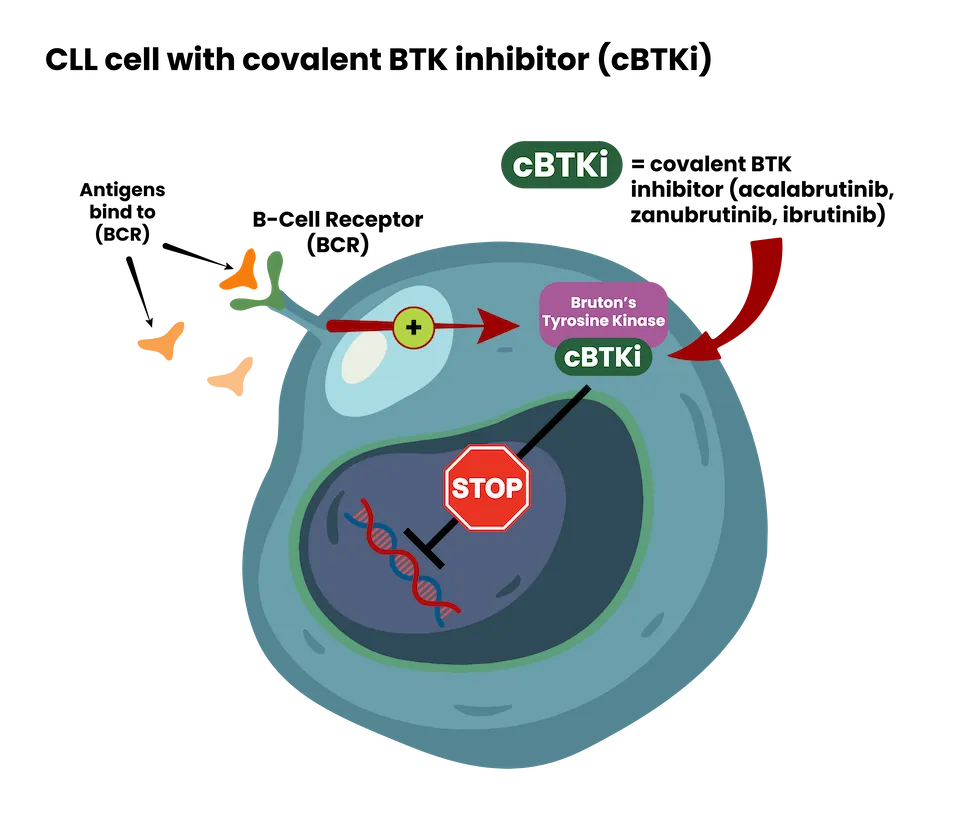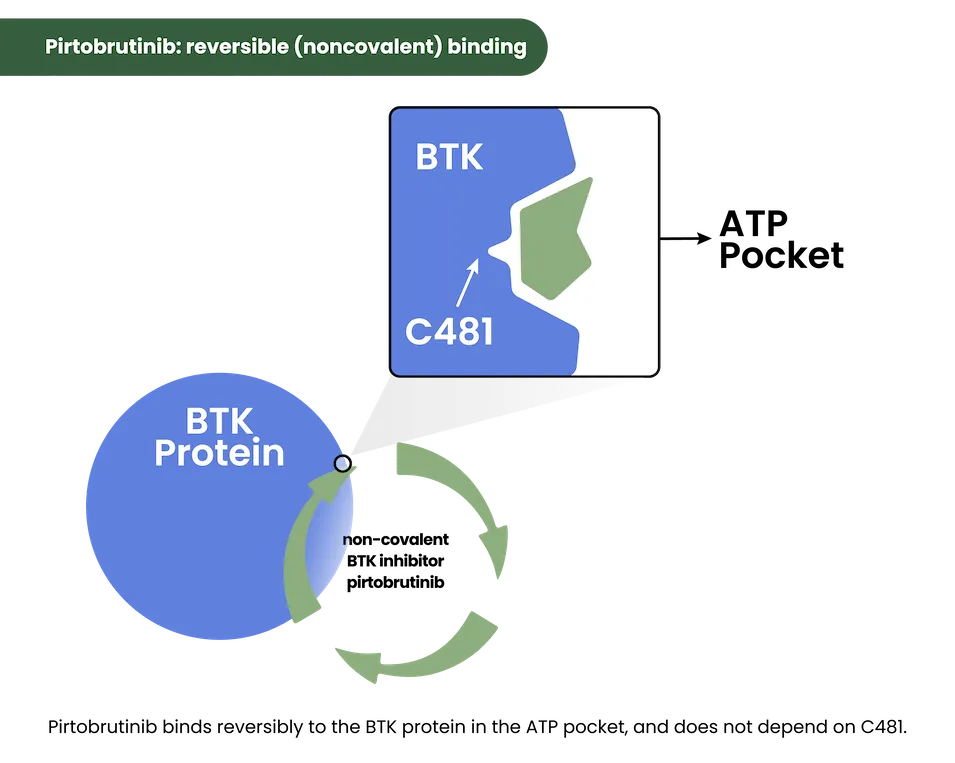BTK Inhibitors
What are BTK Inhibitors?
The purpose of BTK inhibitors is to limit CLL cells from continuously dividing and growing.
BTK, or Bruton's tyrosine kinase, is a protein found in B-cells, including dysfunctional B-cells in CLL. When activated, BTK triggers the replication of B-cells. This is problematic in CLL because it allows cancerous CLL cells to multiply. BTK inhibitors are medications designed to block this protein, thereby preventing the replication of CLL cells.
Covalent BTK Inhibitors
Covalent BTK inhibitors bind permanently to the BTK protein, effectively stopping its activity. However, long-term use can lead to mutations in the BTK protein, causing CLL cells to become resistant to treatment.
Covalent BTK inhibitors include:
- Ibrutinib (Imbruvica)
- Acalabrutinib (Calquence)
- Zanubrutinib (Brukinsa)

Non-Covalent BTK Inhibitors
Non-covalent BTK inhibitors temporarily bind to the BTK protein using hydrogen and ionic bonds. This binding method allows them to inhibit BTK activity even in the presence of mutations that may have developed after using covalent BTK inhibitors.
FDA-approved non-covalent BTK inhibitor includes:
- Pirtobrutinib (Jaypirca)

First, Second and Third Generation BTK Inhibitors
CLL specialists recommend second- or third-generation BTK inhibitors over the first-generation inhibitor as they are more selective in targeting BTK than ibrutinib, resulting in fewer side effects.
- First generation: Ibrutinib
- Second generation: Acalabrutinib or zanubrutinib
- Third generation: Pirtobrutinib
Patients often ask if the second-generation BTK inhibitors acalabrutinib and zanubrutinib have different side effects from one another. Although these therapies have different off-target effects, it is unclear if they have different side effect profiles as they have not yet been compared in a head-to-head clinical trial.
Watch our HealthTree University video below with CLL specialists explaining BTK inhibitors, how they are used to treat CLL, and the side effects to be aware of before taking these medications. We will review all of this in greater detail in the next section.